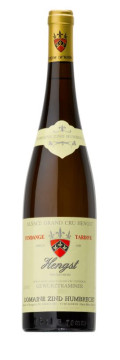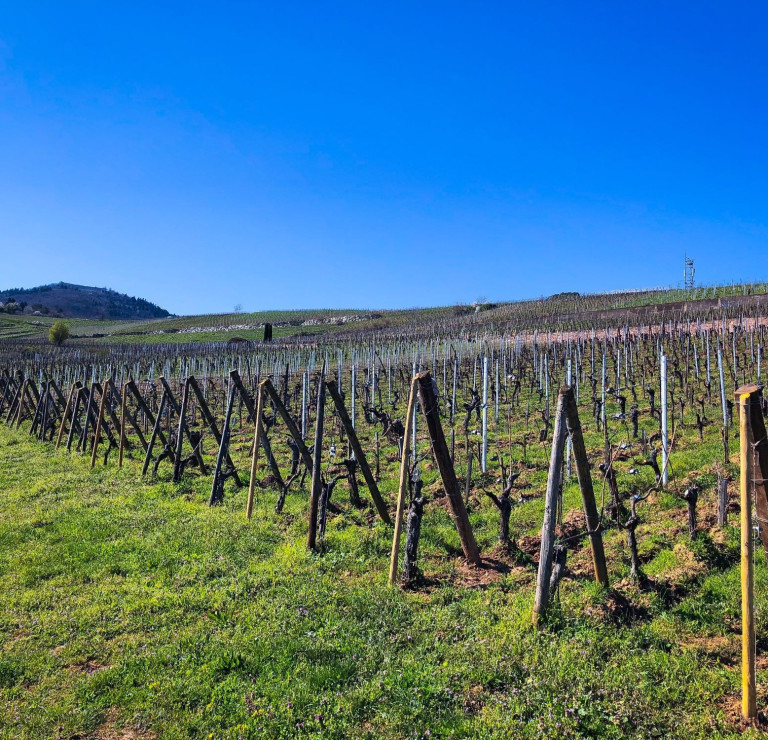
Technical presentation
| Bottling : | July 2007 |
|---|---|
| Acquired alcohol : | 14.5° |
| Residual sugar : | 74.6 g/l |
| Total acidity : | 3.7 g/l H2SO4 (5.7 g/l Tartrique) |
| pH : | 3.83 |
| Yield : | 19 hl/ha |
| Optimum tasting : | 2011-2031+ |
| Average age of vines : | 55 years |
| Grape variety : | Gewurztraminer |
| Terroir : | Grand Cru Hengst |
| Sweetness index : | VT |
| Soil : | Calcareous Marl from the Oligocene period, South/South East facing, medium/steep slope |
Description of the wine Gewurztraminer Grand Cru Hengst 2006 - Vendange Tardive
Only the two oldest vineyard in the Hengst qualify for Grand Cru. Hengst is located in a relatively dry climate, enjoying a full sunny south-east facing. There is rich marl above the aggressive calcareous mother rock, but only on very small layer, which explain why this vineyard needs specific climatic conditions to develop enough noble rot to reach late harvest ripeness. Hengst is never a light dry wine, but never is also the sweetest of our Gewurztraminer. The warmer humid weather of September 2006 was actually ideal for botrytis development. A very small cluster selection allowed the final selection to reach high Vendange Tardive richness (last made were 1990 and 1989). The very small yields also explain the very high concentration of this wine. Should there be a wine of the year…

Tasting notes
01/2008 : The nose aromatics are packed with spicy, leathery, exotic, nutmeg flavours. It is hard to describe a complete profile, such is the nose complex and intense. The palate surrounds the mouth, leaves different coatings, layer after layer. The sweetness is obvious, as it should be in a VT, but I wouldn’t add or take away any. The power and acidity are just right to balance the finish. I could comment this wine forever and ever…

The Hengst Grand Cru of Wintzenheim
The Hengst was first mentioned in the 9th century in an endowment of the Murbach Abbey. The lord of Haut Landsbourg as well as the bailiff of Kaysersberg shared the feudal rights up to the Great Revolution, whilst various noble families, abbeys and the bourgeoisie of Colmar exploited important parcels.